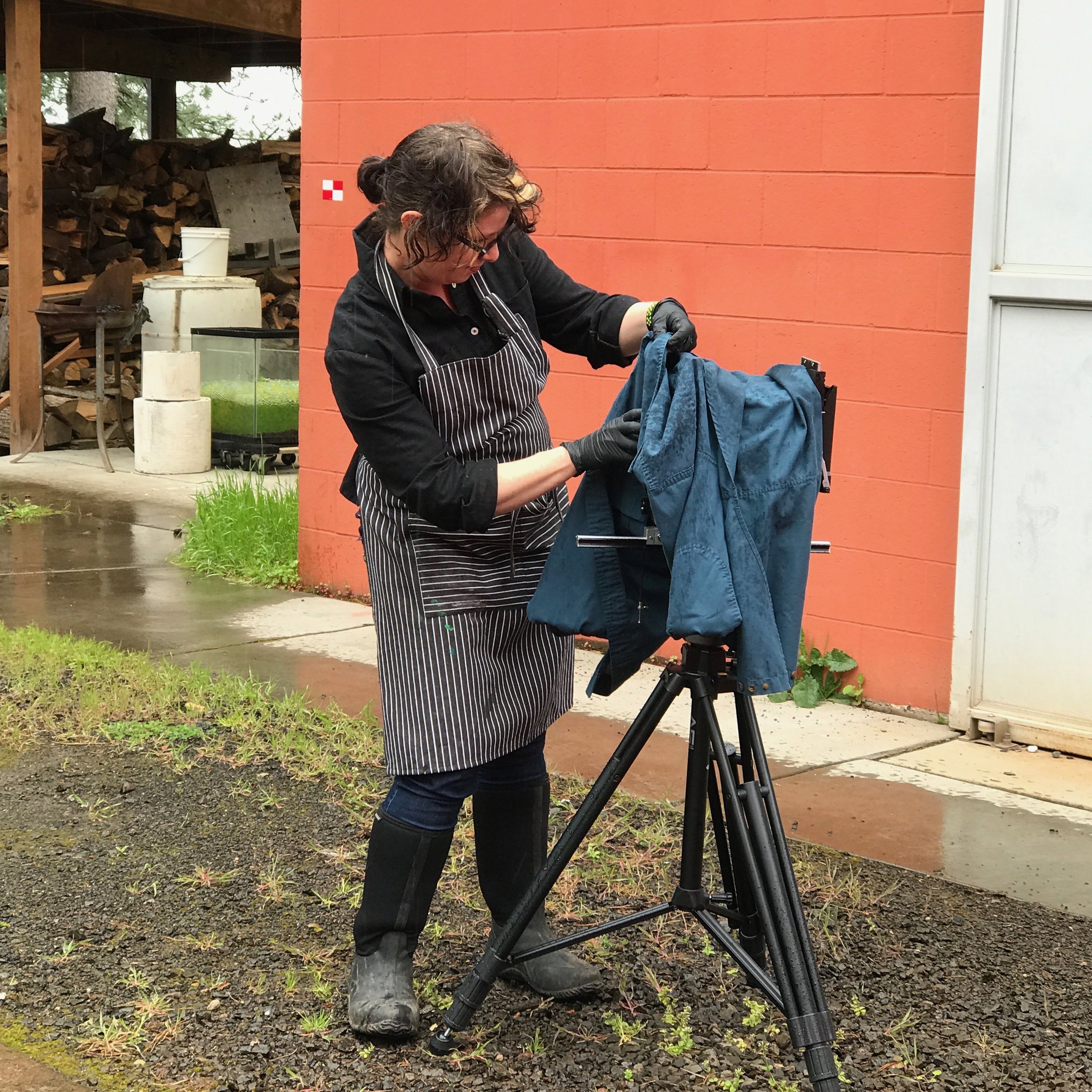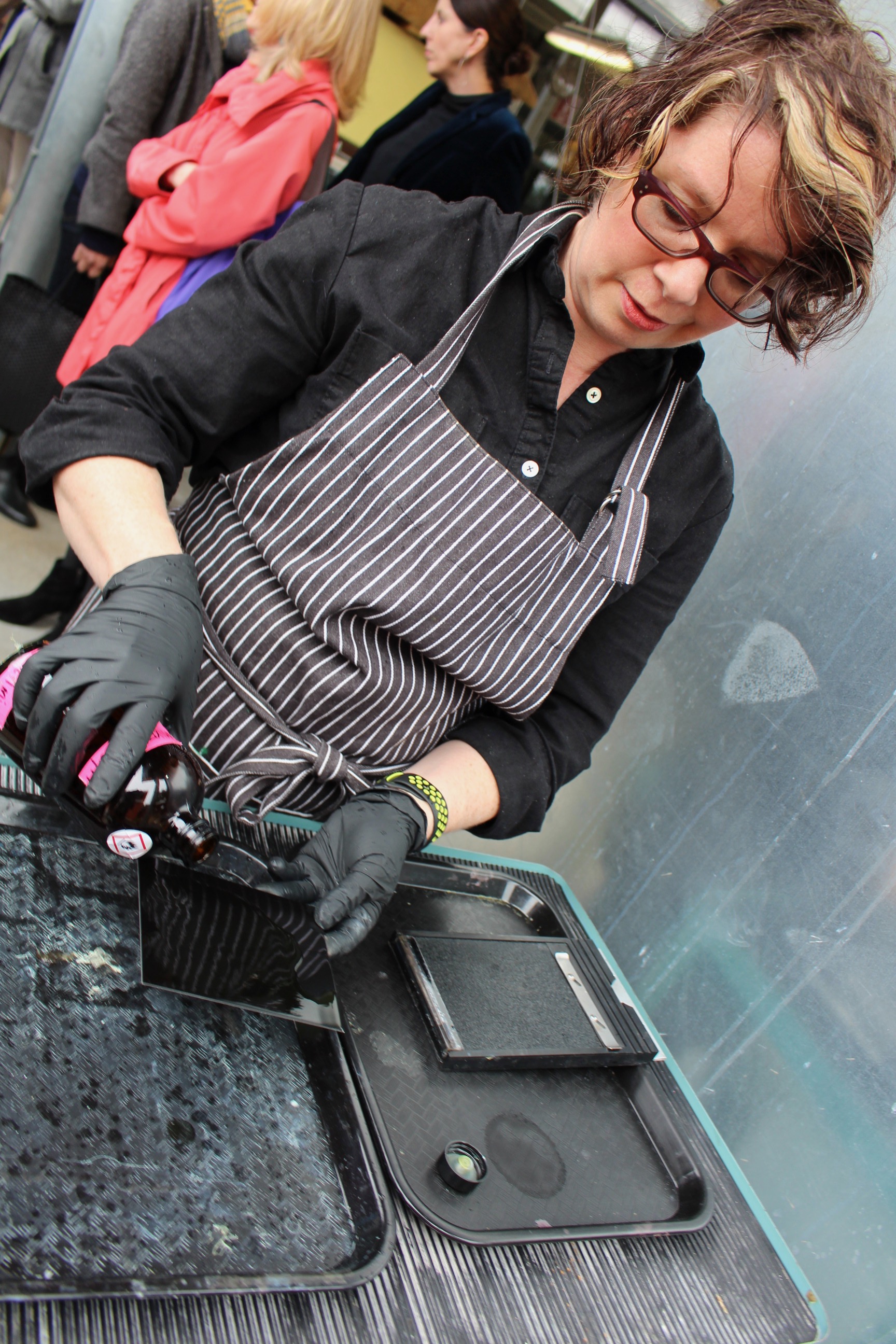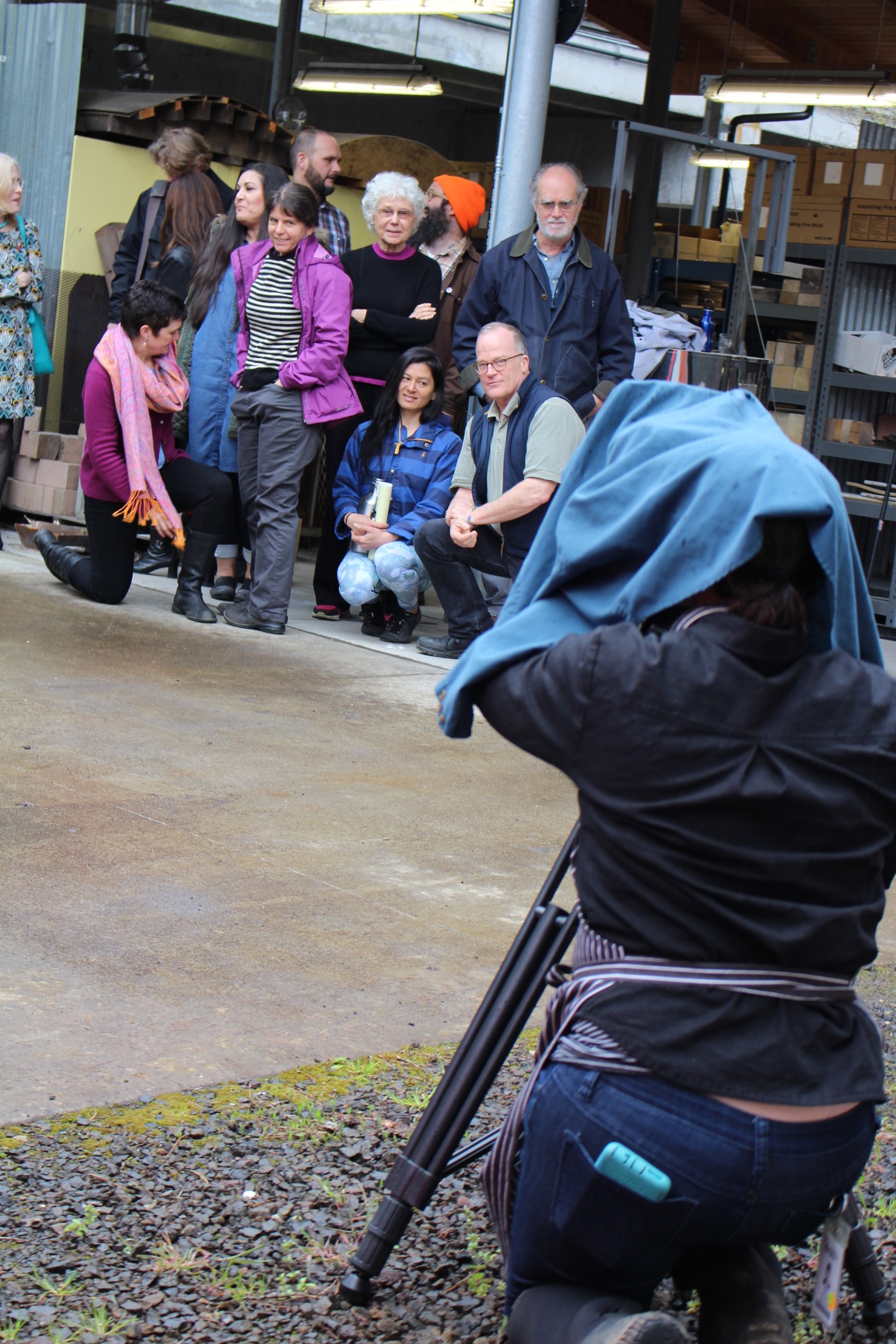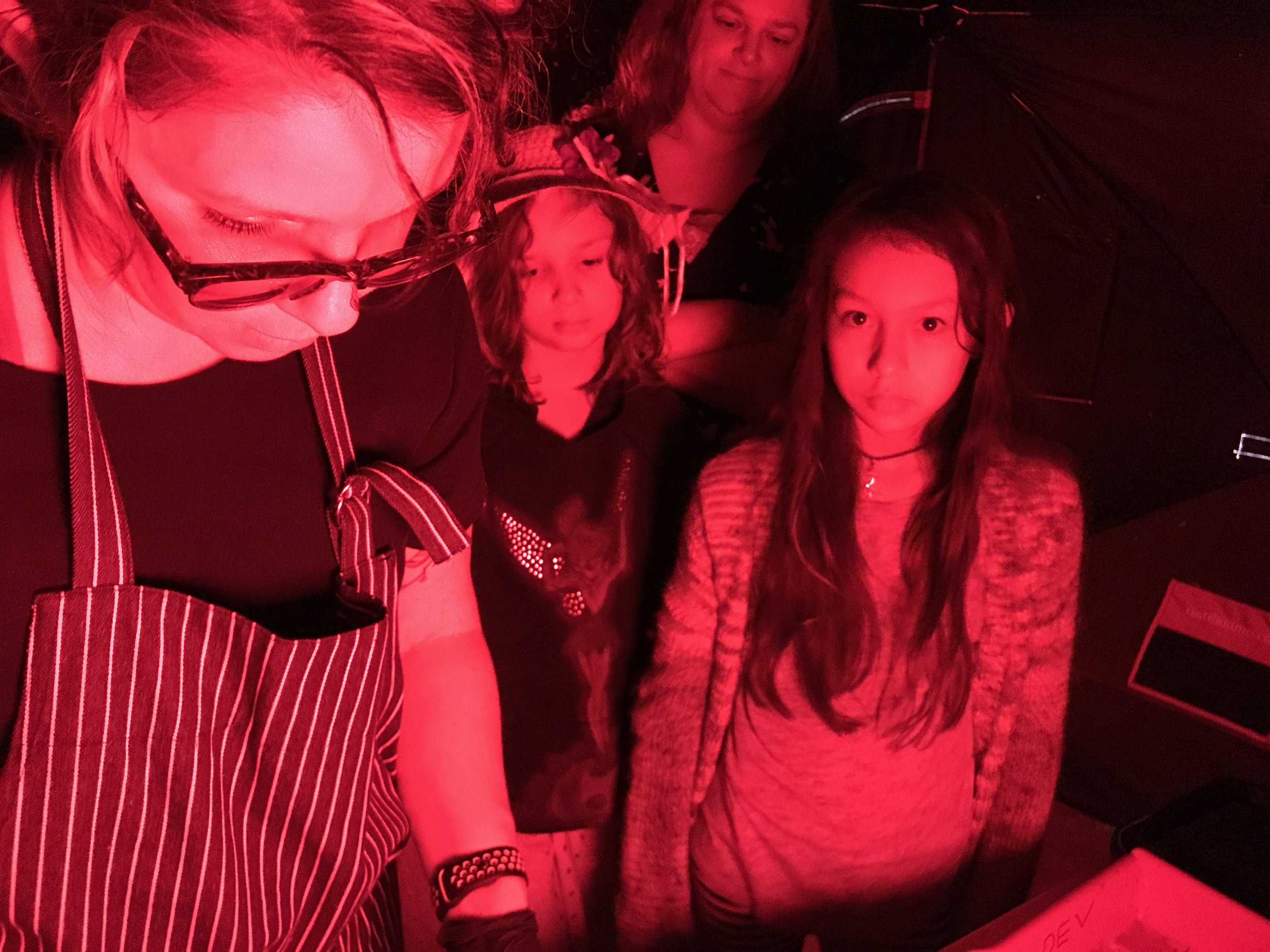May 6th 2017 is World Wide Wet Plate Day, an International celebration of the Wet Plate process and I took the opportunity to spend a whole Saturday at Sylvania Campus taking portraits and inviting participants to learn a little more about this historical process.
It was a good opportunity to really put the workflow to the test. I did have some students volunteer to sit but also who were integral to my crew - they helped set up and break down and as the day went on, the evolution from 'helper' to 'docent' was organic. I overheard students explaining stages, processes and overall history to some of the newer and younger participants and there was a fantastic discussion throughout the day about direct cause and effect relationship between exposure, chemistry and image.
Because this work was made possible in part by the Richard and Betty Duvall Professional Development Award, I am obligated to quantify and report after predicting the benefits and effects of my learning on the learning of my students. I've been teaching art to many age levels in many iterations and roles for over twenty years and at the proposal of this project I knew, as many of us who teach do, that everything I learn and experience ends up in the classroom. I had a great deal of certainty going into this that my students, if they were involved - even in just assisting me in my process - they would learn so much and in turn be able to teach others.
This is precisely what happened that day. The students who sat, assisted and got involved were caught up in the rippling out effect of my own discovery and they learned, as I did, through experience.




































